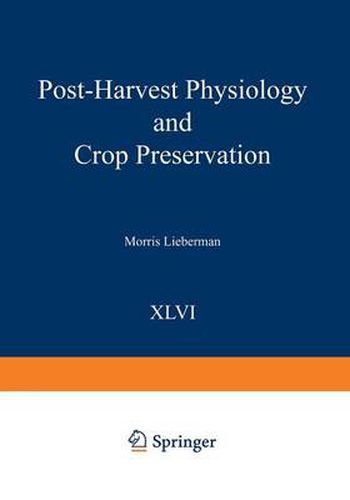Readings Newsletter
Become a Readings Member to make your shopping experience even easier.
Sign in or sign up for free!
You’re not far away from qualifying for FREE standard shipping within Australia
You’ve qualified for FREE standard shipping within Australia
The cart is loading…






This title is printed to order. This book may have been self-published. If so, we cannot guarantee the quality of the content. In the main most books will have gone through the editing process however some may not. We therefore suggest that you be aware of this before ordering this book. If in doubt check either the author or publisher’s details as we are unable to accept any returns unless they are faulty. Please contact us if you have any questions.
Emphasis in agricultural research for many years has concen trated on crop production. This emphasis has become more important in recent years with the realization that the population worldwide is outstripping the food supply. There is, however, another side to increasing the availability of the food supply. This simply involves preservation of the harvested crop*for human consumption. The losses incurred in harvesting, handling, transportation, storage and marketing crops have become a greater problem as the distance from the farm to the ultimate consumer increases. In the Western world where modern transportation, storage facilities, and marketing technology are widely used, post-harvest technology requires a large input of energy which increases costs considerably. There fore, losses are more significant and the ability to provide fresh fruits and vegetables, out of season, at reasonable costs will depend on reduced post-harvest losses throughout the marketing chain from the farm gate to the ultimate consumer. The reduction in post-harvest losses depends on proper use of current technology and further developments derived from a broad spectrum of scientific disciplines. Biochemistry, plant physiology, plant pathology, horticulture, agronomy, physics, engineering and agricultural economics, all provide knowledge which has been useful and will be useful in the future for improving post-harvest technol ogy and crop preservation. This volume records the Proceedings of the NATO Advanced Study Institute on Post-Harvest Physiology and Crop Preservation, held at Sounion, Greece, April 28 - May 8, 1981.
$9.00 standard shipping within Australia
FREE standard shipping within Australia for orders over $100.00
Express & International shipping calculated at checkout
This title is printed to order. This book may have been self-published. If so, we cannot guarantee the quality of the content. In the main most books will have gone through the editing process however some may not. We therefore suggest that you be aware of this before ordering this book. If in doubt check either the author or publisher’s details as we are unable to accept any returns unless they are faulty. Please contact us if you have any questions.
Emphasis in agricultural research for many years has concen trated on crop production. This emphasis has become more important in recent years with the realization that the population worldwide is outstripping the food supply. There is, however, another side to increasing the availability of the food supply. This simply involves preservation of the harvested crop*for human consumption. The losses incurred in harvesting, handling, transportation, storage and marketing crops have become a greater problem as the distance from the farm to the ultimate consumer increases. In the Western world where modern transportation, storage facilities, and marketing technology are widely used, post-harvest technology requires a large input of energy which increases costs considerably. There fore, losses are more significant and the ability to provide fresh fruits and vegetables, out of season, at reasonable costs will depend on reduced post-harvest losses throughout the marketing chain from the farm gate to the ultimate consumer. The reduction in post-harvest losses depends on proper use of current technology and further developments derived from a broad spectrum of scientific disciplines. Biochemistry, plant physiology, plant pathology, horticulture, agronomy, physics, engineering and agricultural economics, all provide knowledge which has been useful and will be useful in the future for improving post-harvest technol ogy and crop preservation. This volume records the Proceedings of the NATO Advanced Study Institute on Post-Harvest Physiology and Crop Preservation, held at Sounion, Greece, April 28 - May 8, 1981.